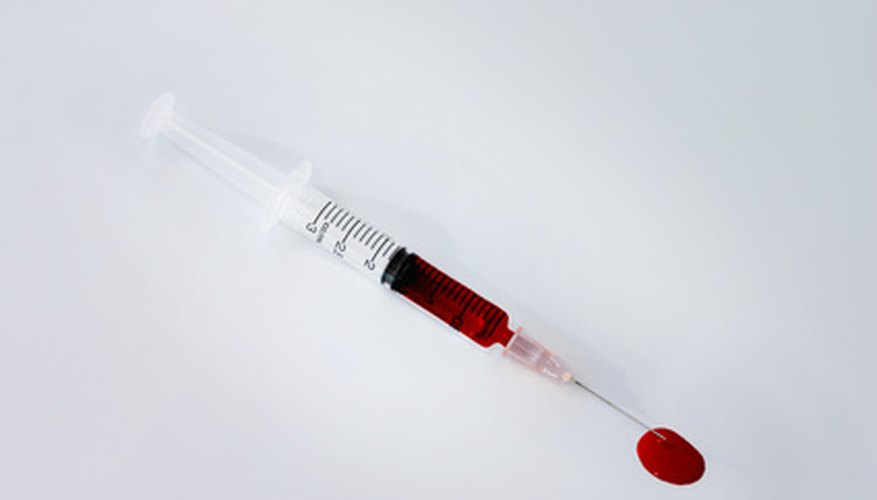Calculating the total number of white blood cells (WBC) in a blood smear is called a WBC count. When you conduct a WBC count, you actually receive a total that includes both WBCs and nucleated red blood cells. Nucleated red blood cells are the precursors to normal red blood cells and look very similar to WBCs. To obtain the real total of WBCs, you need to correct for the presence of nucleated red blood cells; and there is a simple formula you can use to accurately calculate the corrected WBC count.
- Calculating the total number of white blood cells (WBC) in a blood smear is called a WBC count.
- When you conduct a WBC count, you actually receive a total that includes both WBCs and nucleated red blood cells.
Count the total number of WBCs in your blood sample. This number is called the uncorrected WBC count. You can manually count the WBCs by diluting the blood in a diluting chamber, and then analysing the smear in a hemocytometer. If you have access to an automated cell counter, such as an impedance counter or a flow cytometry counter, you can count the WBCs more quickly. In this example, the total number of WBCs is 15,000.
Record the number of nucleated red blood cells per 100 WBCs. You only need to note this number the first time you reach 100 WBCs. If this number is more than five, you need to calculate the corrected WBC count. In this case, the total number of nucleated red blood cells per 100 WBCs is 6.
Multiply the uncorrected WBC count by 100. The total in this scenario is 1,500,000.
Add 100 to the total number of nucleated red blood cells you observed per 100 WBCs. The total in this example is 106.
- Record the number of nucleated red blood cells per 100 WBCs.
- Add 100 to the total number of nucleated red blood cells you observed per 100 WBCs.
Use a calculator to divide the two totals. In this example, you divide 1,500,000 by 106, so the corrected WBC count is approximately 14,151. The corrected WBC count equals the uncorrected WBC count multiplied by 100, and this total divided by the number of nucleated red blood cells added to 100.
TIP
Examine the blood smear meticulously in a pre-established pattern, so you don't miss any sections. The corrected WBC count is expressed as cells per microliter (µL). When counting WBCs, you can also do a differential count of the different types of WBCs that you observe. WBCs are also known as leukocytes.
